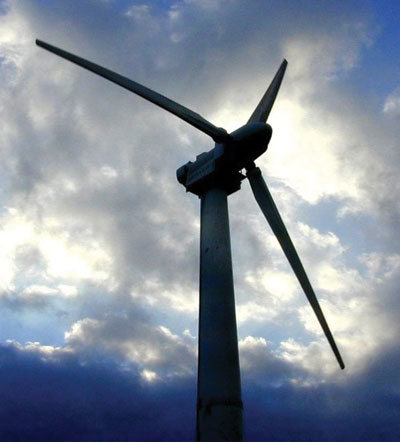
A 1980's era 250 kW HAWT in Hawaii/South Point Wind Farm
There has been a fair amount of hot air circulating across the blogosphere in recent weeks about wind energy after certain media outlets erroneously reported that wind turbines actually contribute to global warming. To set the record straight, the study they cited from the University of Albany showed evidence that pockets of warmer air can exist in the vicinity of wind farms – no big surprise since temperature is tied to the speed at which molecules move. The leap to worldwide warming trends is a giant one and what would appear to be a false one at that.
This controversy is only the latest instance of blowback against one of the more promising forms of renewable energy. Whereas many reports tend to emphasize the limitations of wind technology, it’s worth highlighting the potential improvements being developed within the industry. The standard three-blade design, which rotates on a horizontal axis, has existed since an early model was built in the 1930’s USSR, and that turbine essentially relied on the same concept utilized when windmills first produced electricity decades earlier. Wind power in the 21st Century is shaping up to look a lot different, though. Here’s an overview of some unconventional new approaches.




 Facebook
Facebook Permalink
Permalink Digg
Digg Reddit
Reddit LinkedIn
LinkedIn StumbleUpon
StumbleUpon Tumblr
Tumblr

